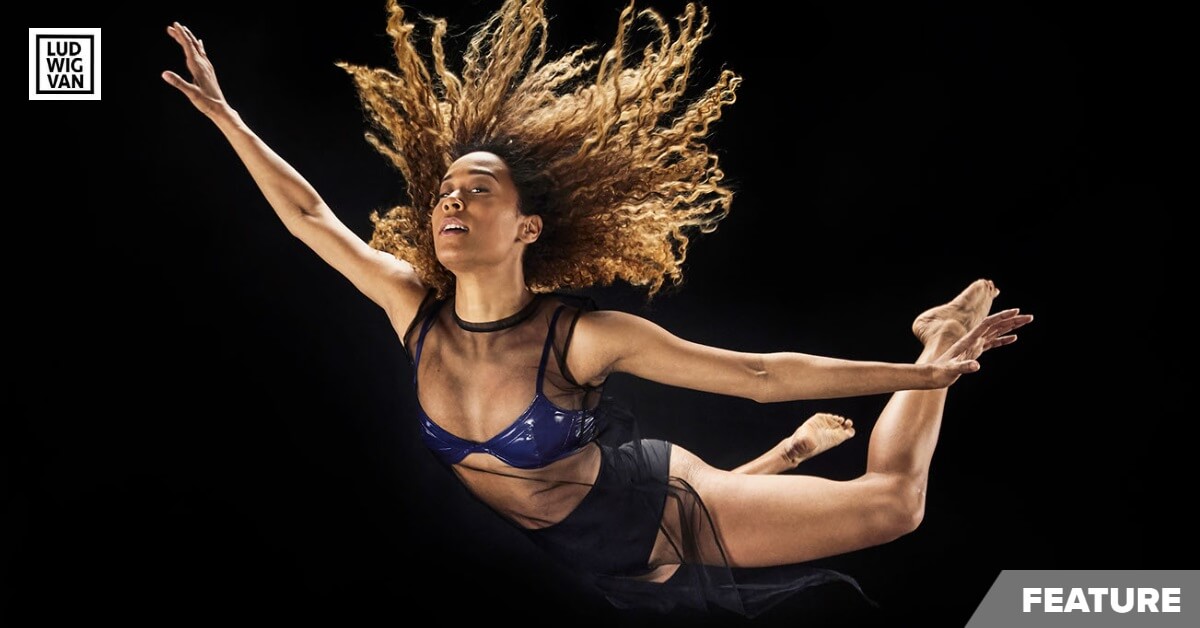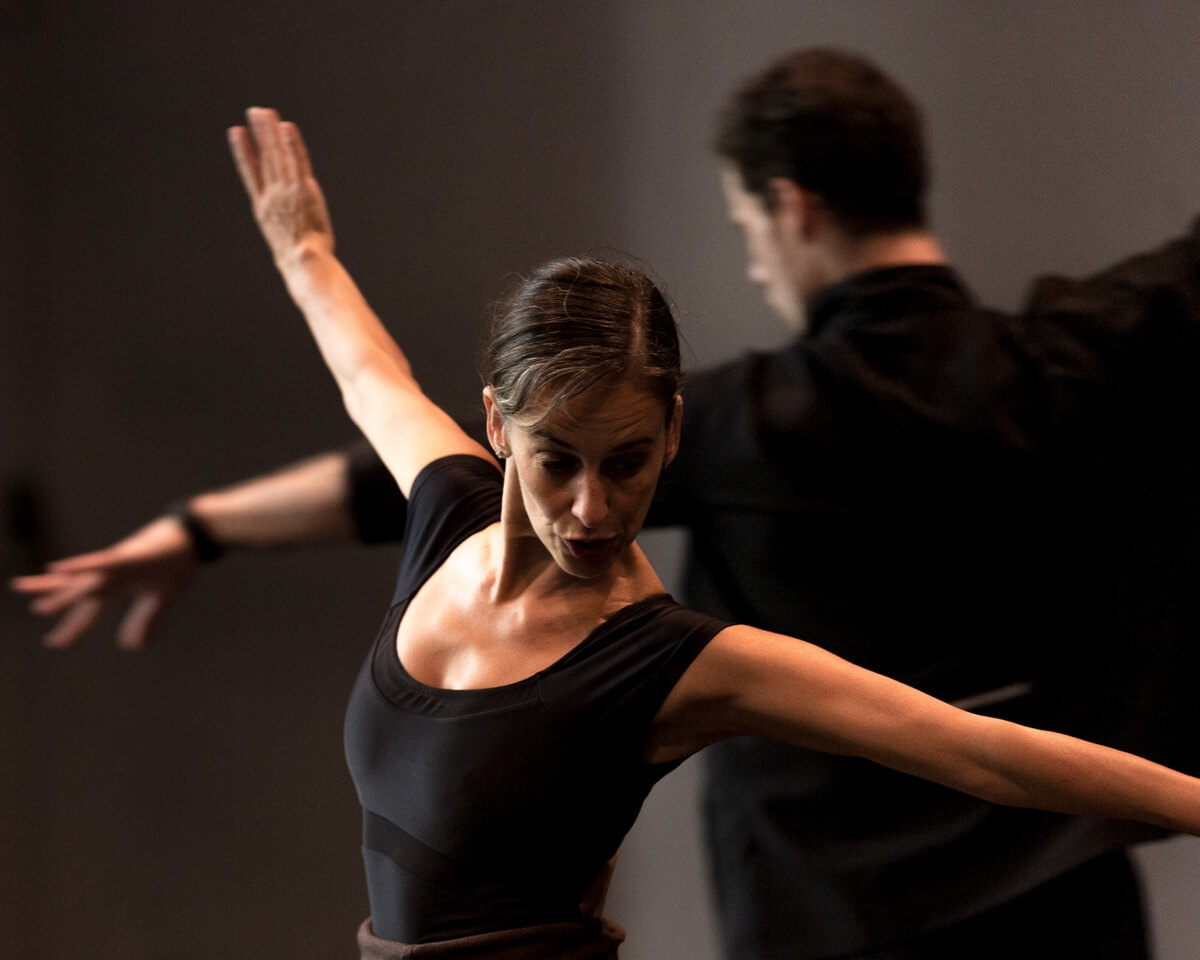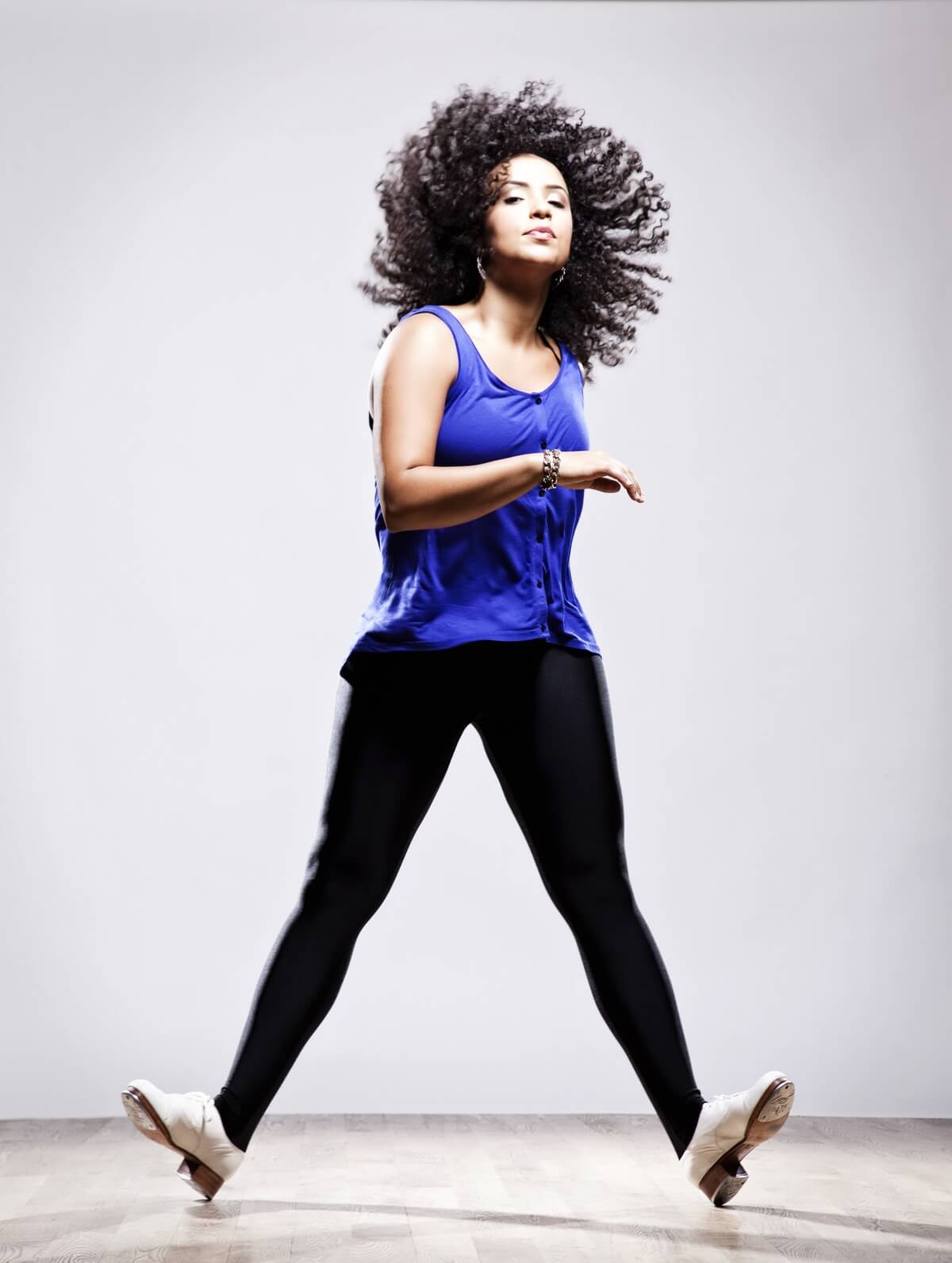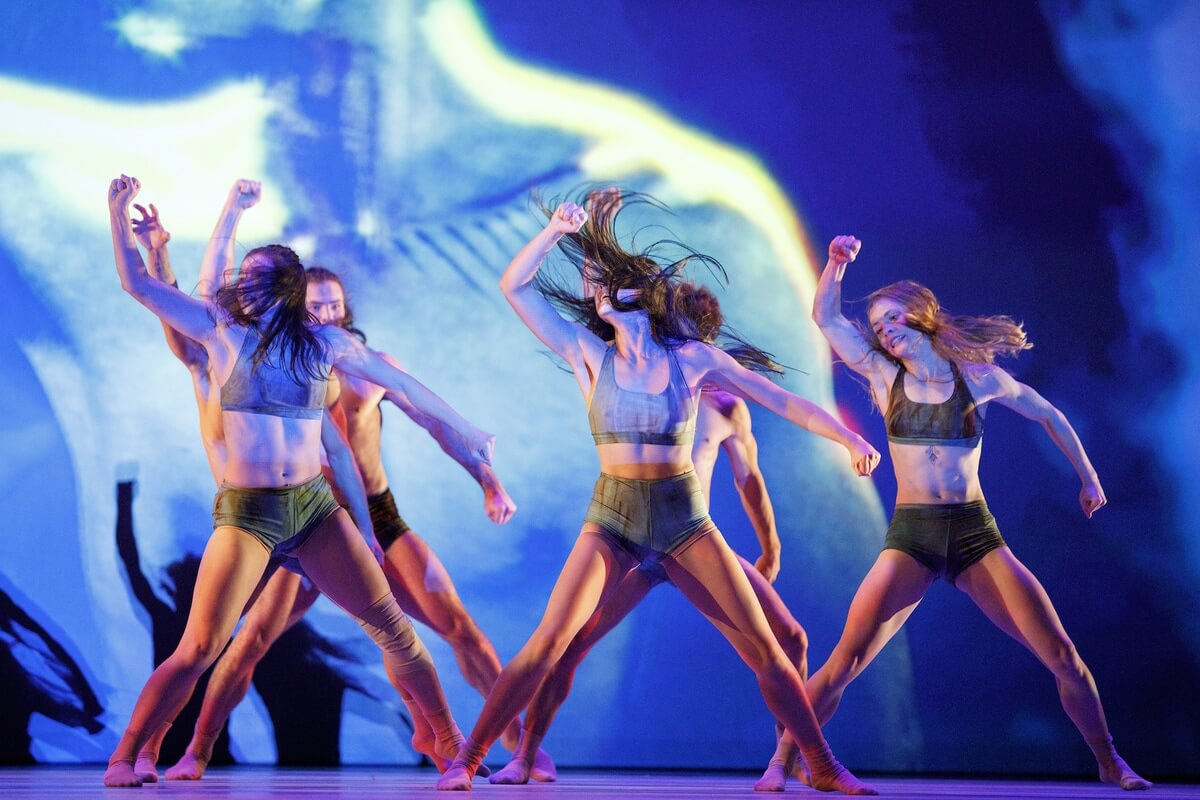
To coin a phrase, Ilter Ibrahimof has gone from zero to 60 in terms of the Toronto dance community. Since arriving in town in 2015, he not only created Fall for Dance North from scratch, he also turned the showcase into the most important and prestigious of this city’s dance festivals. Given Ibrahimof’s track record, it therefore stands to reason that the 2020 edition of FFDN would be anything but routine.
Not for him the trotting out of a parade of pro forma digital dance performances. Rather, Ibrahimof and his artistic team have come up with no less than 12 different projects that fall under the festival’s 2020 banner. Between Sept. 29 and Oct. 18, audiences are being treated to a host of activities that include livestreaming, podcasts, dance films, holograms, interviews, workshops, improvisations and exhibitions. In short, FFDN’s wild and woolly sixth incarnation is innovative, immersive, imaginative and inventive. As the festival’s spanking-new, specially created website states: Why do something ordinary in extraordinary times?
Needless to say, my long conversation with Ibrahimof about this year’s incarnation of FFDN took place on Zoom.
When did you first realize that your 2020 festival was not going to be your usual presentation of dance companies?
When the lockdown happened in March, I thought that we’d be fine with an October festival. It seemed a long way off, and we already had confirmed programs for Meridian Hall, Ryerson Theatre and Union Station. I guess it was at the beginning of April that I saw the writing on the wall. Europe and New York City were in bad shape. It was clear it was not going to be a regular year.
How did you begin to map out the COVID-19 version of Fall for Dance North?
First of all, if we wanted to do something different, mastering technology was our number one priority. The pandemic had pushed the digital world to the front burner. We had to become a media company overnight, with a whole new set of skills. Suddenly we were TV, radio and livestream producers. We had to find the right people to help us. It was a huge challenge to discover ways to connect with dance in a different way in order to generate original content. We had think outside the box for something more than archival video and Instagram workshops. Above all, we wanted to be innovative.
Of the 12 projects you did come up with for this year’s festival, some do carry over from the traditional FFDN.
That’s right. We’re not entirely brand new, but we’ve had to do serious retooling. For example, I still wanted to put on a live show, even if just for a camera crew, but that meant turning it into an exciting, top quality television event. That’s our ticketed Signature Program, at our usual $15 price, which is being livestreamed from the Fleck Dance Theatre, and features six world premieres. Everything else in the festival is free.
The Open Studio program showcases rehearsals-in-progress, but instead of being at Union Station, it’s now being held in the west lobby of Meridian Hall, so people can watch through the glass walls. This year our social dance event, The Big Social, is moving from Union Station into AR, or augmented reality. You aim your device at the image in the centre of Harbourfront’s Natrel Pond, and dancers magically appear.
Mambo is our new podcast which I’m co-hosting with Nicole Hamilton of CIUT’’s Turn Out Radio. We’ll be going behind the scenes of the dance world and talking about human stories — wherever our curiosity leads us. It will be a grab bag of ideas. As well, we always do artist talks and workshops every year, so they are continuing, but will have a more produced feel.
So let’s talk about the new projects, although one is a revival so to speak. I’m talking about Bathtub Bran.
Bran Ramsey is a dance artist who, in 2011, came up with this crazy idea of interviewing dancers and choreographers in his bathtub. It ran for three seasons on YouTube and won a People’s Choice Award. It was always in my mind to resurrect the show because it was quirky and fun, and the unique environment gave the interview a different feel. The pandemic brought it front and centre. We actually bought a bathtub and a plexiglass divider, and filmed six interviews in a backyard.
So let’s move on to the new. I’m fascinated that you are working with Second City on a project called Lost Objects. How did this come about?
We have boxes in our office that contain off-season stuff like the logos we put on cars when we pick up artists at the airport, lanyards that contain official badges, and sharpies that artists use to sign posters. We started to joke around about how do these objects feel about not being used this season, and the idea emerged to give them a voice. We were sort of inspired by the NPR show Everything is Alive. We also included two conceptual ideas — applause and the pre-show announcement — that aren’t being heard this season either. We approached Second City, who loved the idea, and five of their actors are playing two objects each. It’s a group counselling session where they share their feelings.

Your new dance film involves 46 Ryerson dance students. What’s the idea here?
This film is to honour dance students everywhere who didn’t get a chance to finish their semester, and perform their year-end show. We commissioned choreographer/filmmakers Bobbi Jene Smith and Or Schraiber to create a project for them. Bobbi and Or are both former Batsheva dancers, and are now based in New York. The film is called a gathering, and weaves together content that was remotely generated. The students were assigned task-based dance exercises, which led to improvisations. Their final assignment was to take a chair or a table to a green space, and have someone film them. Bobbi and Or have woven the content from these students into a beautiful eleven-minute film. More importantly, it gave the students something to do this summer.
FFDN is coproducing a show with the Citadel + Compagnie, and what’s more, I’m very impressed that it’s being directed by Barbara Willis Sweete, one of Canada’s most esteemed film directors. She does the Metropolitan Opera broadcasts. I presume this is a livestream event.
Last year, on her own, Laurence Lemieux ran a late night series at the Citadel for people who wanted to see more dance after a FFDN performance. This year, the Night Shift program becomes an official part of the festival as a joint presentation. It’s an evening of solos that is being livestreamed and directed by Sweete. There were over 100 applicants and the curators picked six, each very different, one from the other.
I’m glad to see the program called Toronto Stages: Dancing Through Time, because I believe strongly in encouraging explorations into dance history.
We were thinking that because the festival is online, and we would be attracting national and international audiences, we should really have a spotlight on Toronto. We reached out to Dance Collection Danse and curator Amy Bowring, and we settled on the idea of an interactive exhibition of fourteen venues that were important to dance in Toronto, from the early 1900s to 2000.
Our web developer told us about a camera called the Matterport that uses 3D technology to do a virtual 360 degree tour. The watcher literally steps into the space. Because it is so expensive, we could only use the Matterport for three of the venues — the Winchester, the Citadel, and the Fleck. As a whole, the exhibit is rich in photographs and stories, and we hope that Toronto Stages will give additional context to the whole festival. Incidentally, the Matterport is popular with real estate agents for showing homes.
The project I find the most unusual, and therefore the most compelling, is [in] verse.
I’m a big fan of the spoken word. Are you familiar with the 1994 Italian film Il postino? It was about the great Cuban poet Pablo Neruda, and the soundtrack album featured powerful readings of Neruda’s poems by Hollywood A-listers along with the original music from the film. I wanted to create an album of words and music for the festival, so I asked dance artists, both national and international, to pick a poem to read. I have to say that many artists were surprised that I asked them to speak.
After doing some research, I found Canadian cellist Arlen Hlusko to curate the music. Lucky for us, she is usually based in the States, but because of the pandemic, she was back home in Ontario. There are 13 tracks in all, and they are in a variety of languages, For example, Louise Lecavalier is learning German, so she wanted to do her poem in German. As a side note, I wanted to get away from the evil little screen for part of the festival. I love radio. Audio is a special art form.

I see you are releasing the programs in a staggered timetable. Are there ample opportunities to catch something after an opening?
Everything is on demand so the programs are available right to the end of the festival. This means that new tickets can be bought for the Signature Program as well. However, when the festival ends on Oct. 18, all the content will be removed. You have to set some limits. That keeps the festival flavour.
Of course a big question is how are you observing health and safety requirements?
We are doing things very carefully, in particular, having meetings with everyone to work out comfort levels, and in some cases creating bubbles.
Why is this season subtitled ‘The Flip Side’?
Because of the special nature of this year’s festival, I wanted to give it a name, something that encapsulates what we’re trying to do in 2020 as we embrace the digital platform. When we look back, I want to remember this season by name, but like naming a baby, it proved to be very difficult. We didn’t want something literal or descriptive or safe. We finally came up with the idea of the old A-side, B-side concept — how the A-side of a record was expected to be the hit, and the flip side was the add on. So to us, The Flip Side says that FFDN 2020 is the alternative to the usual and the expected.
Why did you ticket the Signature Program, when everything else in the festival is free?
We didn’t want to give everything away. As well, we must find ways to monetise digital content to support on-going activities. For example, it cost $90,000 just for artists’ fees for the Signature Program.
You say you had confirmed programs for the dance presentations. Did you have to pay out contracts?
We were unbelievably lucky. We were just about to send out the contracts, which we usually do in April, so we were never out of pocket. As for our overall budget, our income was reduced by 35%, but then our costs were less by 35% because we were not in theatres or bringing in national or international companies. Our usual festival budget is around $1.3 million, but this festival is costing one million dollars, so almost as much.
Why did you go through the expense of developing a whole new website just for the festival?
Traditional websites are set up with live performance in mind. We were very cognisant about the steps you have to take for the purpose of digital delivery. I wanted to provide a Netflix-like experience, so that people could see the programs in a row, like a gallery of digital offerings. We had to ensure that the reader would never have to leave the home page, so everything was built right on the home page. The digital content is like a brochure. Our new website is the theatre. That’s our stage this year, so we invested in a platform that can accommodate both live performance and high quality digital innovation. Because of the pandemic, the performing arts are discovering the power of digital content. It’s moving the arts into the future.

Is the 2020 version of FFDN the way of the future?
If we’re still under pandemic restrictions in 2021, the festival has a format in place, and we’re tracking how many people are watching each program. The successful ones can continue for a second year, but we will still have to come up with new and innovative ideas. Creating interactive content is a bit of a beast.
As for going to the theatre, it is going to be a matter of a successful vaccine and people’s comfort level. We’re building new habits about how we entertain ourselves. The rhythm of life has changed. When large theatres do open here again, and I’m guessing the fall of 2021, I think that the way we go to the theatre has altered forever.
For example, wearing masks may be mandatory, or there will be a temperature check at the door, and we’ll have to give information for contact tracing. The architecture of conventional theatres may have to change and take on the concept of a black box with flexible seating. I was living in New York when 9/11 happened and I watched the world change. That’s what I see happening now.
I’m picking up loud and clear how important you think the digital platform is for the future.
We need to use the digital platform in such a way to stay engaged with the audience. People, including me, were getting bored with the programming on offer. If I wasn’t watching, how could I ask an audience to watch conventional digital material? That’s why we looked for new ways to present dance at this festival. We have to learn the right tools in order to survive and thrive.
That you and your team were able to pull this off between April and October is amazing. What has the journey been like?
In a word, inspiring. We have all been loving it. It’s been a lot of fun coming up with ideas. Zoom has become a friend, but, for a break, sometimes the team would have social distanced meetings in parks. On the other hand, it has also been emotionally and physically draining to produce projects of quality by remote contact.
(Full programming details and ticket information for Fall for Dance North: The Flip Side can be found here.)
#LUDWIGVAN
Get the daily arts news straight to your inbox.
Sign up for the Ludwig van Daily — classical music and opera in five minutes or less HERE.
- INTERVIEW | Actor Diego Matamoros Takes On Icon Walt Disney In Soulpepper Production Of Hnath Play - April 16, 2024
- SCRUTINY | Opera In Concert Shine A Light On Verdi’s Seldom Heard La Battaglia Di Legnano - April 9, 2024
- SCRUTINY | Lepage & Côté’s Hamlet Dazzles With Dance And Stagecraft Without Saying Anything New - April 5, 2024



